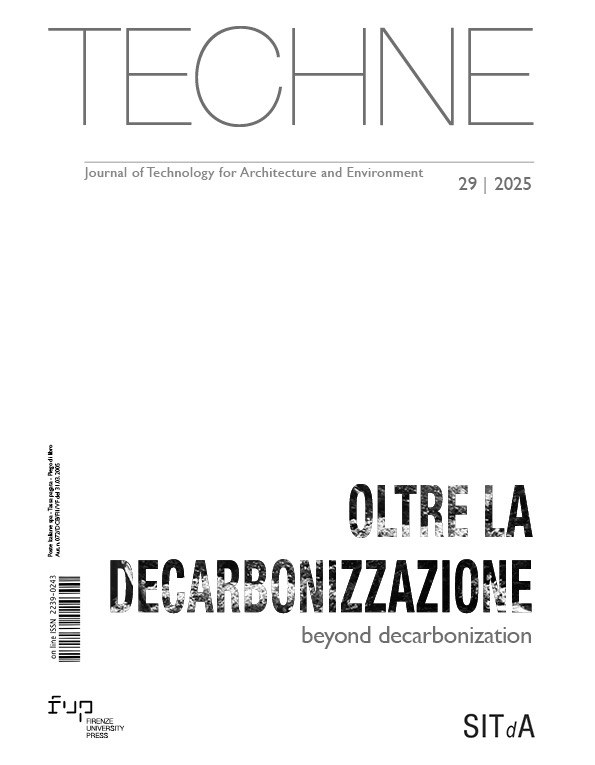Published 2025-07-31
Keywords
- Climate resilience,
- Climate-neutral transition,
- Built environment,
- Technical policies
How to Cite
Copyright (c) 2025 Mario Losasso

This work is licensed under a Creative Commons Attribution 4.0 International License.
Abstract
While decarbonisation is identified in a system of technical actions aimed at reducing CO2 emissions, the concept of climate neutrality represents an evolution of climate change coping strategies. Indeed, it considers the reduction of emissions of all greenhouse gases and tends to assume a strategic and cultural value of climate protection, with progressive involvement of the production system and the organisation of cities. Effective approaches to design involve new ways and priorities in Its conception through efficient use of resources and improved urban infrastructure, including green infrastructure, with the capability of integrating buildings into renaturalised contexts. Interpreting, managing and reprogramming innovative action in urban regeneration and architectural design requires recomposing, actualising, the relationship between communities and nature through the tools, enabling devices and mediums of culture and technology.
Downloads
References
- European Union (2021), Direttiva 2021/1119 del Parlamento Europeo e del Consiglio, che istituisce il quadro per il conseguimento della neutralità climatica. Available at: https://eur-lex.europa.eu/legal-content/IT/TXT/PDF/?uri=CELEX:32021R1119 (Accessed 29.06.2024).
- European Commission (2021), Fit for 55: Delivering the EU’s 2030 Climate Target on the way to climate neutrality. Brussels: European Commission.
- Available at: https://ec.europa.eu/info/strategy/priorities-2019-2024/european-green-deal/delivering-european-green-deal_en (Accessed 21.07.2024).
- Losasso, M, Attaianese, E. and Rigillo, M. (Eds) (2024), Innovazioni convergenti per lo spazio abitabile, CLEAN, Napoli.
- Perulli, P. (2021), Nel 2050. Passaggio al nuovo mondo, il Mulino, Bologna.






